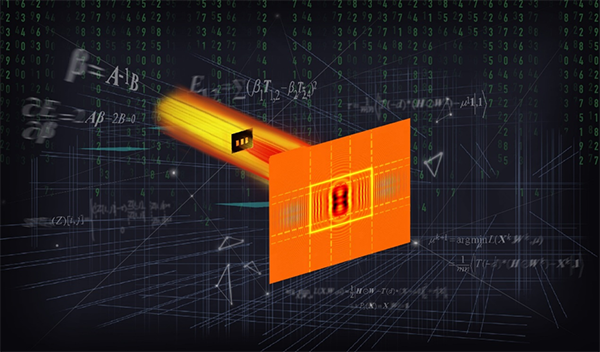Terahertz (THz) imaging, benefiting from THz radiation’s capabilities of non-ionizing and penetration of non-conducting materials, serves as a cutting-edge non-destructive evaluation technology. One of the major challenges in photonics is complex amplitude wavefront sensing, the amplitude image indicates the absorption properties, while the phase image reveals the refractive and thickness information, thus simultaneously determining that the amplitude and phase distributions of the wavefront are highly desirable for applications ranging from bioimaging to material characterization. Due to the long wavelength of the THz wave, the imaging resolution is also one of the key considerations for THz applications.
To achieve THz full-field, high-resolution, and complex amplitude imaging, a THz research group from the Research Center of Laser Fusion at China Academy of Engineering Physics (CAEP) carried out THz synthetic aperture in-line holography. The research results are published in Photonics Research, Vol. 7, Issue 12, 2019 (Zeyu Li, et al., Terahertz synthetic aperture in-line holography with intensity correction and sparsity autofocusing reconstruction).

Schematic diagram of the terahertz synthetic aperture in-line digital holography.
In this work, a high-resolution and high-quality THz lensless in-line holographic setup was established based on a self-developed THz quantum cascade laser (THz-QCL). To enhance the spatial resolution limited by the numerical aperture (NA) of the array detector, the synthetic aperture method was adopted, a practical global optimization algorithm was proposed to correct the intensity differences among sub-holograms, and a lateral resolution better than 70 μm (~λ) at 4.3 THz was achieved. To overcome the twin-image problem for in-line holography, a sparsity-based iterative phase retrieval algorithm was used to give high-quality reconstructions. Moreover, to obtain the best in-focus reconstruction distance, a new autofocusing criterion based on the “reconstruction objective function” was introduced into in-line holography for the first time, so the autofocusing procedure and the reconstruction were unified within the same framework. They demonstrated the success of the THz synthetic aperture in-line holography on biological and semiconductor samples, showing its potential applications in bioimaging and materials analysis. Note that the proposed approaches can be applied to other wavebands as well, such as visible light and X-ray band.
Prof. Xun Zhou from the research group believes that this work is of great significance to promote the development and application of THz imaging technology; Prof. Weidong Wu believes that the proposed sparsity-based autofocusing phase retrieval algorithm effectively alleviates the twin-image problem and automatically obtains the optimal in-focus distance, providing new ideas for reconstruction in Gabor in-line digital holography.
Future work will focus on THz laser optimization, THz 3D holography, and THz imaging application.


